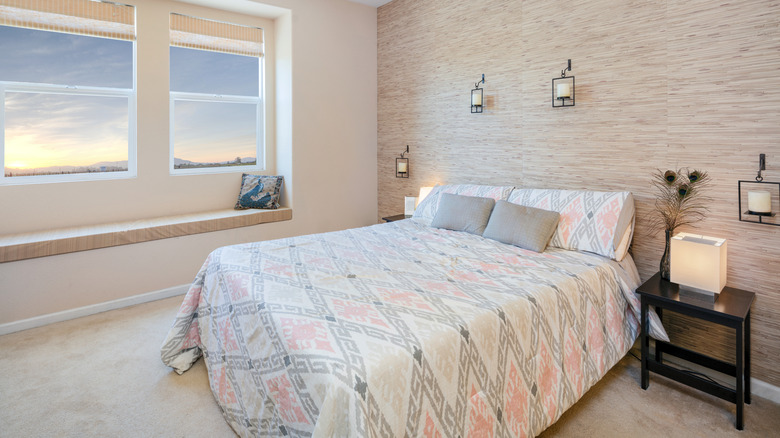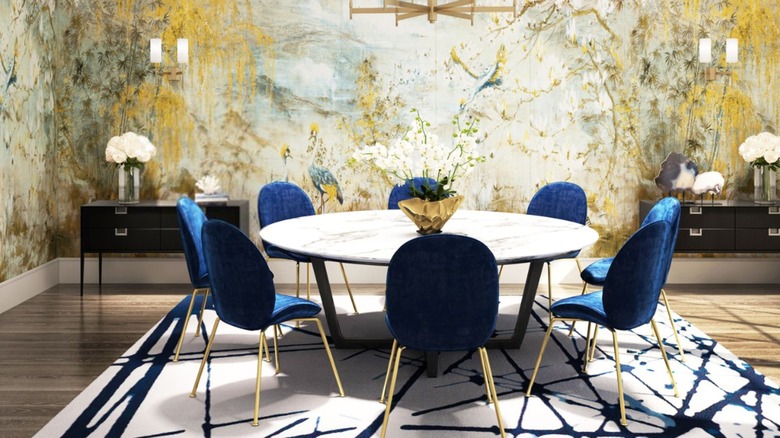Grasscloth Wallpaper Is Getting A Patterned Makeover And We're Obsessed
Grasscloth has been used on walls for around 2,000 years. Historically, it was chosen simply because materials like bamboo were plentiful and happened to be growing nearby. Today, many people still choose grasscloth out of a long list of available wall coverings. Grasscloth is often chosen to add texture to a room, but there are additional benefits of installing grasscloth wallpaper, such as eco-friendliness and hiding wall imperfections. Grasscloth is not only made from bamboo, but other natural materials like jute, sisal, seagrass, hemp, and raffia.
While some wallpaper styles have become outdated, grasscloth has remained an acceptable option, adding just a hint of pattern and texture over what paint alone could provide. Grasscloth's neutral aesthetic has always made it a popular choice for minimalist or bohemian style homes. But now that the patterned wallpaper trend is making a comeback, grasscloth wallpaper is also getting a patterned makeover. This newest interior design decorating trend combines a natural, organic look with bold maximalist patterns, perfect for any interior style.
Where to use patterned grasscloth wallpaper
Printed grasscloth allows both the color-averse and color-obsessed to enjoy its textured appeal. When it comes to decorating with grasscloth wallpaper, the sky (or the ceiling!) is the limit. But while it looks great in any room, grasscloth wallpaper can vary when it comes to durability. To choose the right wallpaper for your space, you need to pay attention to how the grasscloth is manufactured.
You can find grasscloth made of completely natural materials, a combination of engineered and natural, or entirely faux. The faux variety is durable and can be placed anywhere you'd put regular wallpaper. However, the more natural the grasscloth, the more delicate it is. Avoid installing natural grasscloth wallpaper in humid areas like kitchens or bathrooms. You should also avoid high-traffic areas such as hallways, since natural grasscloth is hard to clean (you can't use wet cleaning products, only light dusting). Living rooms, dining rooms, home offices, bedrooms, and even ceilings are a good option for both patterned and plain grasscloth. Natural grasscloth is also more expensive than faux, and combined with the delicate and time-consuming installation, means you may want to use it in a small area, such as a single accent wall, or above wainscoting.

